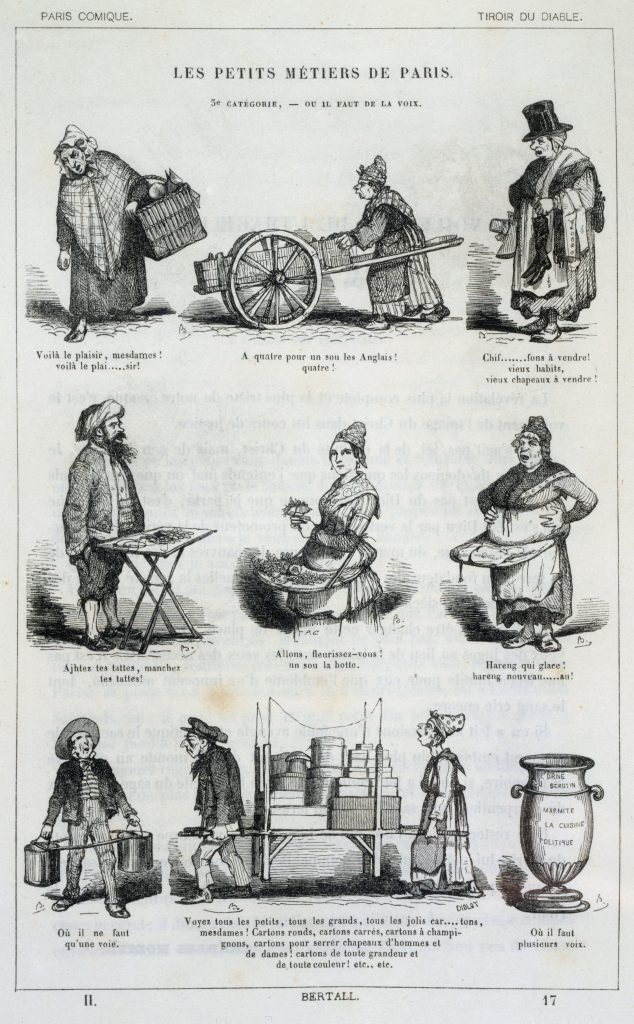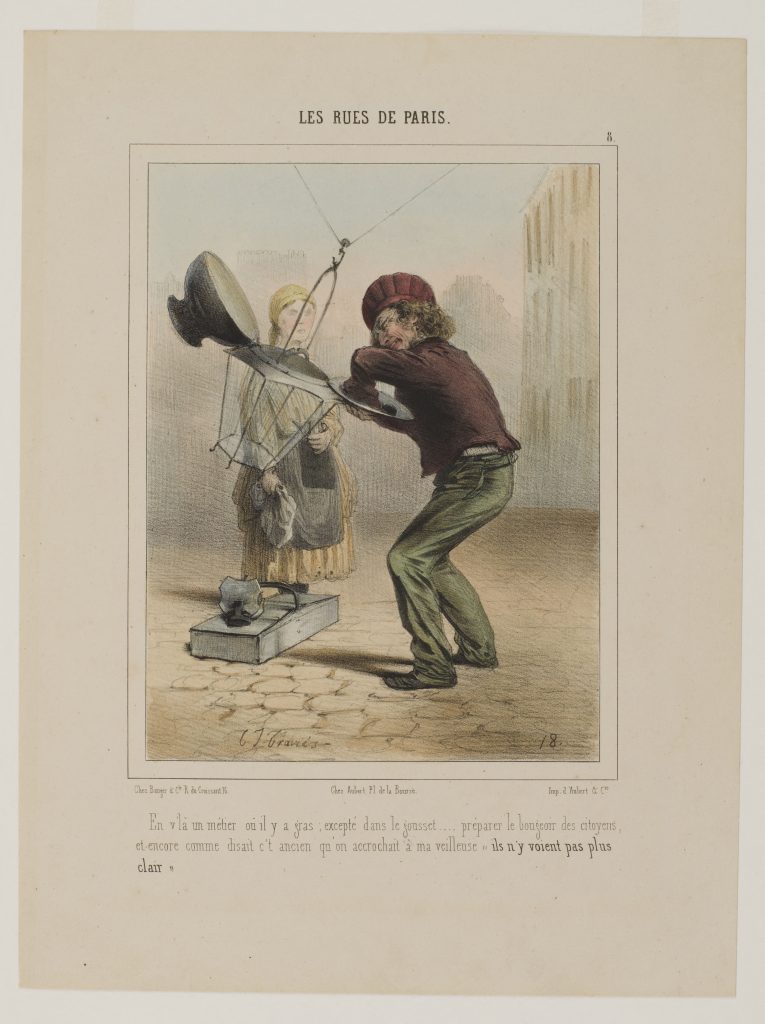
Nineteenth-century streets in Paris were known for their sounds, smells and animation that is lost today. Many small trades were carried on in the street where one might run across the lamplighter , the ragman or the coco seller (a cool drink made of water, liquorice juice and lemon). These familiar figures caught the attention of writers and draughtsmen who have left amusing sketches of these picturesque characters.




‘In 1813 and 1814, a time when so many giants went about the streets when so many enormous undertakings jostled each other for space, many trades could be found that are completely forgotten today. In a few years, the lamplighter, who slept in the daytime, a family with no other home than the boss’s store, every one of them kept busy, the woman washing the windows, the man pouring the oil, the children rubbing reflectors with dirty cloths; family that spent the day preparing for night, and who spent the night putting out and relighting the day according to the fantasies of the moon, this family covered in oil would be entirely gone.
The darner, living like Diogenes in a barrel surmounted by a niche for a statue made with hoops and waxed cloth, is another curiosity that has disappeared.
You would have to organise a hunt in Paris, a beat like hunters do in the surrounding plains for some kind of game, and spend several days before you find one of those fragile stalls, once to be found by the thousands, composed of a table, a chair, a brazier for warmth, an earthen oven for all the cooking, a screen in front, for a roof a piece of red cloth affixed to a some wall, from which hang two cloths that revealed to passers-by perhaps a seller of cooked veal lungs, scraps and a few greens, a cobbler, or a seller of small fish’.
Balzac, Ce qui disparaît de Paris, in Le Diable à Paris, 1845